How to install a urinal?
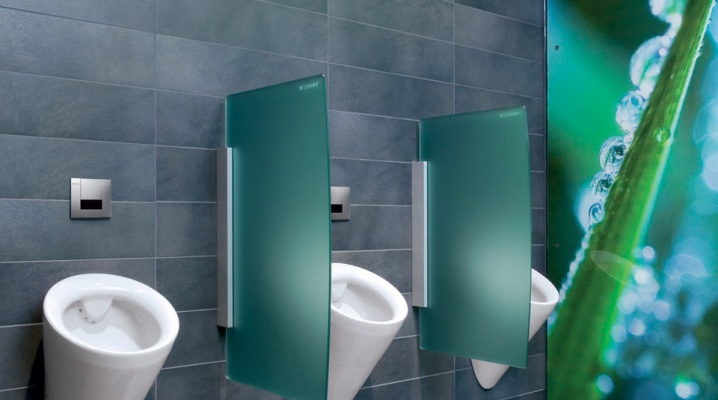
The urinal is considered one of the most popular types of plumbing, which is most often found in offices and public places. Recently, they began to install it in apartments, country houses, since it is a very practical and convenient thing. When purchasing a urinal, it is necessary to take into account not only the material of its manufacture, design, but also the method of installation, since this plumbing differs in its location.
Mounting types
A urinal is a type of toilet bowl, which has a simple design and is suitable for installation not only in public toilets, but also in bathrooms of apartments and houses. Today, this type of plumbing is in great demand, as it is convenient to use, allows you to save free space in the toilet room and simplifies its cleaning. According to the method of installation, wall and floor urinals are distinguished, and according to the connection system, upper and hidden.

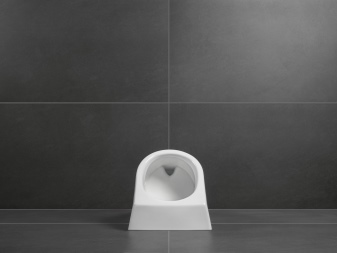
Suspended (wall-mounted) models are produced, as a rule, with one-piece siphons, flush cisterns are not supplied with them.
Find a suitable place before installing this unit. It is best to place wall-mounted urinals in the corner area of the bathroom. The connection of such models is carried out by assembling separate ceramic sections, each of which has an outlet with a grate and is connected to the sewer system using a water seal. Fastening to the wall is carried out with screws, under which it is imperative to put rubber washers (this allows you to reduce the risk of faience breakage).
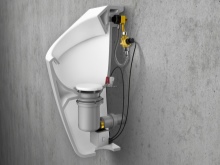

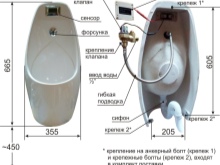
As for floor urinals, they are mainly installed in public places, simultaneously placing several sections, which are separated from each other by booths. There are no requirements for choosing the location of such models, the only thing is that the installation is recommended to be carried out after the completion of the laying of the sewage pipeline and the connection of hydraulic gates. In addition, floor-standing urinals should be positioned below floor level by pushing the outlets into the hydraulic seals. The installation process for such devices is quite simple, as it resembles the installation of conventional toilet bowls. The outlet of water in floor models is carried out vertically, therefore the siphon must be mounted in the floor (in case of its absence, the shutter is inserted directly into the pipe).

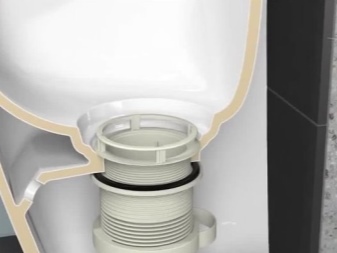
Mounting
Installing a urinal is especially important for those apartments and houses where large families live. Before purchasing and installing this hygienic device, you should correctly select its size and location, taking into account the norms and rules of the internal sanitary system. The width of the urinal should be between 350 and 360 mm.
To install a urinal with your own hands and connect it to the sewer, you just need to have the necessary tools and minimal skills. The following instruction will help beginners with this.
Floor model
Installation work is not much different from the installation of the toilet, since it is also vertical. It is recommended to install floor-standing urinals only after the sewerage system has been laid and the hydraulic seals have been prepared.
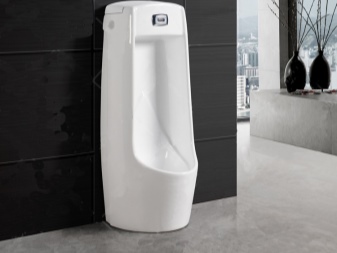
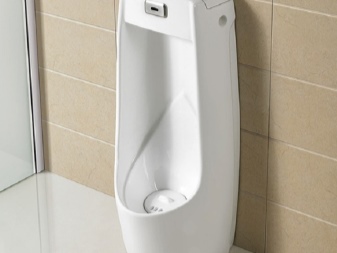
First of all, you need to align the base on which the structure will be installed. Then, install the section at a level of 100-115 cm below the floor level, pushing the outlet holes into the hydraulic seal.Places where loose contacts of the urinal outlet with the bowl and all the closures are noticeable must be carefully sealed with asbestos cement or resin strand.
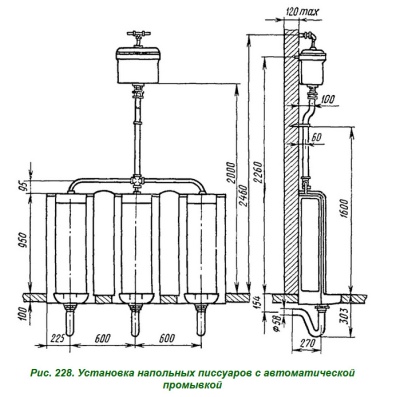
Wall model
If the wall of the bathroom is solid, then the urinal is best built into it. At the same time, installation is often used to install this type of plumbing (in the case when the walls are fragile). The fastening of the structure is carried out using special dowels, which are threaded through the holes previously prepared in the product.

Before starting the installation work, you need to make sure that the water pipes will be on top of the urinal faucet.
If the urinal device does not provide for the presence of a hydraulic seal, then it is necessary first of all to install a siphon, thanks to which the structure and the sewer pipe will be connected to each other.
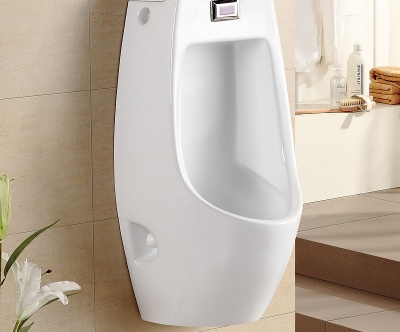
The installation process is as follows: first, the place where the urinal will be fixed is marked (the wall must have a flat surface), then the holes are drilled (they must match the dimensions of the dowels), the structure is put on. The installation of suspended models is completed by connecting the device to a drain pipe. For this, a siphon outlet tube is taken and led to the sewer system through a socket. The end of the branch pipe must be lubricated with red lead and a linen strand wound around it, the junction is poured with cement mortar.
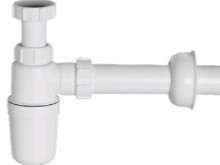


How to connect?
Once the installation of the urinal is complete, all that remains is to properly connect it to the water supply and sewerage system. It is important to take into account that some models have a solid siphon, while others are not provided. Nowadays, there are few urinals on sale, which are equipped with a special tank for collecting water. The most common type is considered to be structures with an open connection to the water, which have a special tap. To connect such models to the water supply, you need to use a plumbing line. It is not recommended to use flexible eyeliner, because, due to its elasticity, it will give the design an unaesthetic look, and it will look rough in the design of the toilet. The very same connection process is as follows.
- First, the water pipes are supplied, they must be located several centimeters higher from the place where the tap will be installed in the future. With the help of a coupling, plastic pipe is squeezed from a metal pipe using a lock nut.
- After the installation of the coupling is completed, the pipe, to which the crane is connected, should be rolled into a squeegee - everything should be firmly fixed. All connections are sealed.
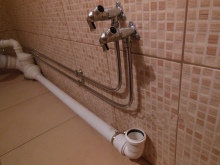
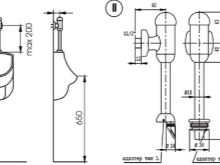
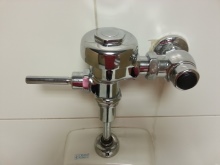
To connect the urinal to the sewage system, you need to decide on the type of water drain, of which there are 3.
- Continuous drain. This is very convenient, but economically unprofitable, since you will have to bear large expenses for utility bills.
- Manual flush. It is considered a universal and most common type of water flushing.
- Auto. It is a modern version of the drain, which is very popular and is often used when installing a smart home system. In this case, water flushing is controlled using sensor sensors.
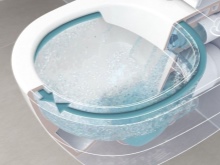
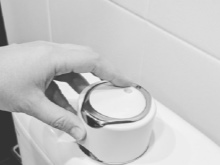
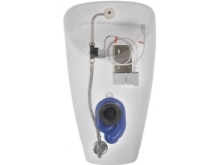
Then you need to connect the siphon tube to the sewer socket. The lower part of the branch pipe, which will be installed in the socket, is processed with red lead, a linen roll is wound on it in several layers (its thickness should not exceed 3-4 mm).
Then, similar actions are performed from the upper part of the branch pipe, which must be inserted into the socket itself.
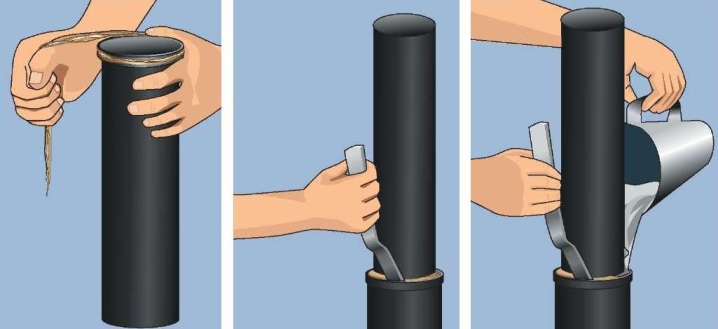
For reliable operation, all joints must be filled with cement mortar.
In addition, when connecting the urinal, it is recommended to take into account the following recommendations of experienced specialists.
- Reinforced-plastic pipes that are used to connect to the water supply and sewerage system are best hidden under decorative trim. This will give the interior of the bathroom a stylish look.
- After installing the structure and connecting it to all systems, it is necessary to check the joints for leaks by performing a test run of the system.
- If the design of the urinal provides for a hidden siphon, then the sewer must be removed from the wall. For models with an open siphon, it is possible to drain water from the floor.
How the receiver is installed, see the video.













The comment was sent successfully.